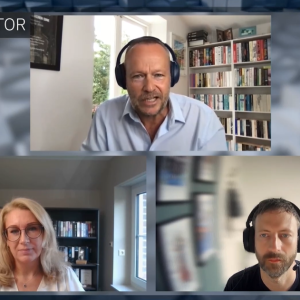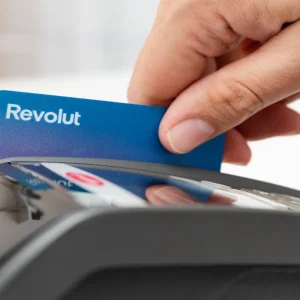One of the many questions facing the telecommunications industry today is how they can best provide broadband capabilities to households and small businesses that can’t afford high-speed cable or fiber connections. Existing copper wire is too slow for the ‘last mile’ between the curb and the home and, although ISDN offers a more powerful option, it doesn’t handle the kinds of multimedia applications that eat up bandwidth. The search continues to provide a relatively low cost high speed jump between the curb and the consumer. ADSL, asynchronous digital subscriber line, modems are in production today to address this gap but proponents of VDSL, very fast digital subscriber line, reckon the technology offers still better bandwidth capabilities, less interference in the line and a wider choice of application that can run on it. Deutsche Telekom has always prided itself on its technological prowess – even when its products sometimes failed to meet consumer needs. Germany’s carrier is still very much enamoured of technology, but so are its corporate and consumer customers.
Fast ramp
Enthusiasm for the internet, which was lukewarm just three years ago, has reached record proportions. Consultants at Diebold Deutschland GmbH in Frankfurt estimate eight per cent of German households have an internet connection, compared to 12 per cent in the US and 17 per cent in Sweden. Germany is able to take the fast ramp onto the Information Highway for two reasons, Glanz says. One is the country’s long established and avid interest in home shopping and tele-banking applications. The other is the progress of Deutsche Telekom in installing ISDN and making speeds of 64K available to businesses and consumers alike. Indeed, it has been Telekom’s ability to deliver fast internet access and support multimedia services which has boosted the growth of the internet in Germany. Moreover, it is this know-how that has helped Telekom compete against alternative facilities-based operators such as London-based Colt Telecom Group Plc and Worldcom Inc in the US. Both have built expensive fiber -only infrastructures to link to their customers’ premises in large cities such as Frankfurt and Hamburg. Such networks meet the demands of major corporations and banks, but are not so attractive to small and mid-sized businesses. This leaves the way wide open to Telekom. It has recently decided to field trial VDSL technology, a technology it is convinced can be the missing link between copper wire and fiber. We see it as a complement technology, says Peter Kahl, head of Telekom’s data communications business unit in Bonn. Where we already have fiber we will use fiber . Where we have copper we will use copper. We don’t play favourites among technologies when it comes to bringing broadband to the customer. Telekom’s field trial, the first in Europe, involves equipping 10 ordinary phone lines in the city of Nuremberg with very high bit rate Digital Subscriber Line modems. They are capable of 26 megabits per second. The technology is interesting for Telekom because it can fill the gaps in its decentralized network architecture, Kahl says. We aren’t far from our customers’ premises so we see xDSL technology as a proper link to the customer. It’s our focus to bring the services to the customer. How they are transported is not so important.
By Peggy Salz-Trautman
In general, Telekom is less than 500 meters away from the customer premises – another reason why the carrier has chosen to field trial VDSL. The purpose of the trial is to gain more knowledge about VDSL technology and how, and to what extent, it can be implemented. Telekom is particularly anxious to market VDSL to small and mid-sized businesses as a cheaper alternative to leased lines. Testing to date allows 13 Mbps each way, but the goal is to reach 26 Mbps symmetric transmission. Indeed, such businesses that have needs beyond ISDN but not the funds for direct fiber would be ideal customers for Telekom, analysts say. VDSL is the technology that reaches furthest into the future and the most future-proof, Kahl says. The present market focus, however, is clearly on ADSL because it’s available now. Telekom is employing ORSpeed I system, a system supplied by Israel’s Orckit, which claims to be the only VDSL product to date which supports both symmetric and asymmetric transmission. Manufacturers including Orckit suggest that VDSL products will eventually emerge the cheaper of the two technologies but there is a catch, analysts say. It will be years before the products are available to a mass market – particularly since Orckit and Broadband Technologies of the US are the only VDSL technology manufacturers. Telekom has chosen to trial VDSL because the carrier has always been attentive of new technologies, Kahl says.
The next mass market
Telekom is a technology-oriented carrier and always has been. With so much money and know-how invested in technology already, it naturally follows that we are interested in learning more about VDSL. But installing VDSL on a broad scale may be more difficult than Telekom expects, analysts say. The frequency range at which VDSL operates is said to interfere with certain radio signals. Line noise is also an issue. We can say from our tests that ADSL and VDSL technology can coexist in one line, Kahl says. It’s when we have more than that the problems begin. Telekom is also interested in ADSL and has been testing the technology in VOD video-on-demand trials in Nuremberg as well. Our experience shows ADSL has the potential to be the next mass market, Kahl says. The goal of these trials is to deliver broadband VOD services to both private households and businesses. But there is no way of knowing when VOD will be part of Telekom’s standard services offer, Kahl says. One reason for the hesitation, he says, is the uncertainty about the growth in demand for VOD services. The greater demand is for fast internet access, Kahl says. In addition, Telekom is also working out the details of a larger ADSL field trial by the end of 1997 in the German state of North Rhine Westfalia.






